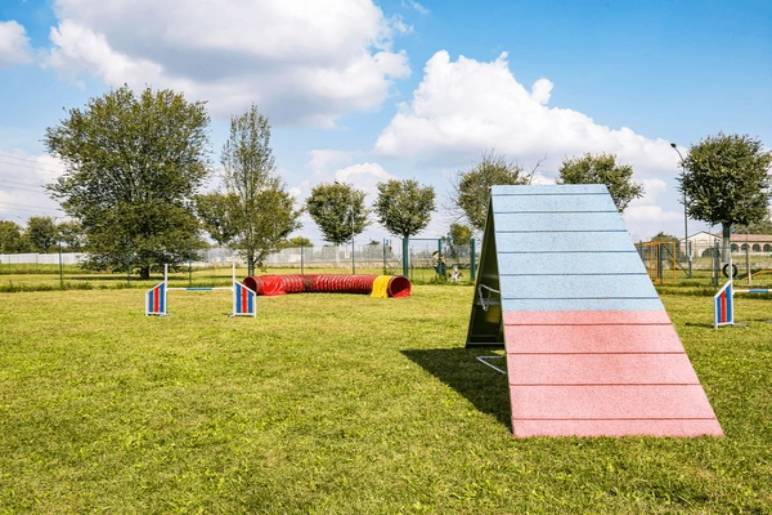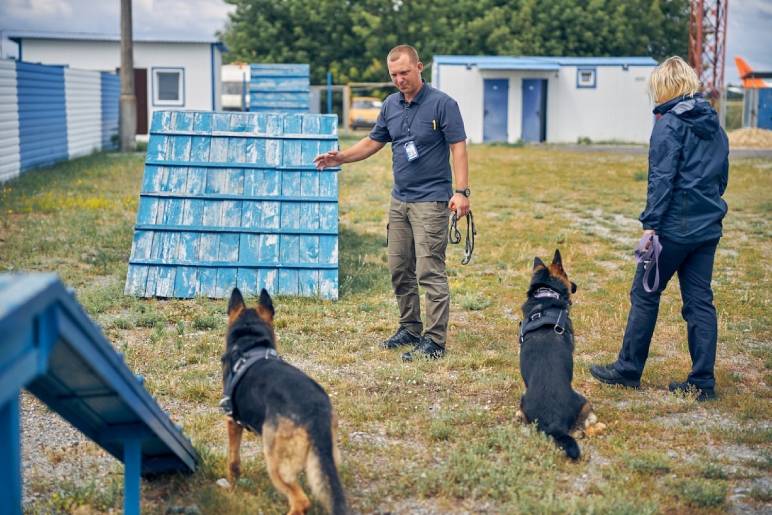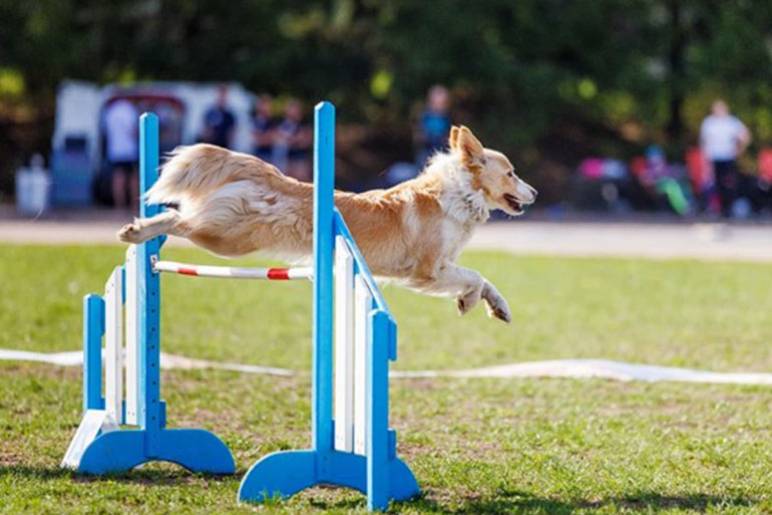Training your dog is a rewarding experience that strengthens your bond and ensures a well-behaved pet. Whether you’re a new dog parent or a seasoned trainer, using the right dog training equipment can make the process smoother and more effective. In this guide, we’ll explore must-have training tools, their benefits, and how to use them.
Why Dog Training Equipment Matters

Training your dog without proper equipment can be challenging. Quality tools not only make training easier but also ensure the safety and comfort of your pet. From managing behavioral issues to teaching basic commands, the right gear can significantly enhance your dog’s learning experience.
Essential Dog Training Equipment

1. Collars and Harnesses
- Flat Collars: Ideal for everyday use and basic training. Ensure it fits snugly but isn’t too tight.
- Martingale Collars: Great for dogs that tend to slip out of standard collars.
- Harnesses: Best for leash training, especially for dogs that pull. They provide better control without straining the neck.
2. Leashes
- Standard Leashes: These are perfect for basic obedience training and daily walks.
- Retractable Leashes: Allow freedom while maintaining control, but use cautiously during training.
- Long Lines: Essential for teaching recall commands and off-leash behaviors.
3. Training Clickers
Clickers are small devices that make a distinct sound. They are used in positive reinforcement training, marking the exact moment your dog performs a desired behavior.
4. Treat Pouches
A treat pouch helps you carry rewards conveniently during training sessions. It’s a simple but invaluable tool for maintaining focus and reinforcing good behavior.
5. Training Mats
Training mats are excellent for teaching your dog to stay in one place. They can also help with crate training and provide a sense of security.
6. Interactive Toys
Puzzle toys and treat dispensers keep your dog mentally engaged. These are perfect for reducing boredom and channeling energy constructively.
7. Agility Equipment
For advanced training and exercise, agility tools like tunnels, weave poles, and jumps are fantastic. They challenge your dog both physically and mentally.
8. Muzzle
A muzzle can be a crucial training tool for managing aggressive behavior. It ensures safety during vet visits or grooming, though it must always be used humanely.
Choosing the Right Equipment for Your Dog

Selecting the appropriate training gear depends on your dog’s:
- Size and breed: Larger breeds may require sturdier equipment, while smaller dogs might benefit from lightweight tools.
- Temperament: For anxious or excitable dogs, calming tools like anxiety wraps can help.
- Training goals: Whether you’re focusing on basic commands or advanced tricks, choose gear tailored to your objectives.
Tips for Effective Training
- Be Patient and Consistent: Training takes time. Use your equipment regularly and stick to a routine.
- Positive Reinforcement: Reward good behavior with treats, toys, or praise. Avoid harsh methods.
- Start Small: Introduce new equipment gradually to prevent fear or resistance.
- Seek Guidance: If you’re unsure about training techniques, consult a professional. Dog training expert Daniel Garrigan offers valuable insights into using training tools effectively.
Common Mistakes to Avoid
- Improper Fit: Ill-fitting collars or harnesses can cause discomfort or even harm.
- Over-Reliance on Equipment: Tools are aids, not substitutes for consistent training and interaction.
- Skipping Socialization: While training equipment is vital, exposing your dog to different environments and people is equally important.
The Role of Professional Trainers
Sometimes, despite having the best tools, training challenges persist. This is where professional trainers like Daniel Garrigan come into play. With years of experience, Daniel provides customized solutions and practical advice, ensuring a happier, well-trained dog.
Where to Buy Dog Training Equipment
You can find quality training tools at pet stores, online marketplaces, and specialty shops. Look for reputable brands that prioritize safety and durability. Reviews and recommendations can guide you toward the best products.
Final Thoughts
Investing in the right dog training equipment can transform your training experience. From basic tools like leashes and collars to advanced agility gear, each item plays a vital role in shaping your dog’s behavior. Remember, training is not just about obedience; it’s about building trust and understanding.
For expert advice on training techniques and equipment use, don’t hesitate to reach out to professionals like Daniel Garrigan. With the right guidance and tools, you’ll have a well-behaved dog in no time.
Have A Look :-
